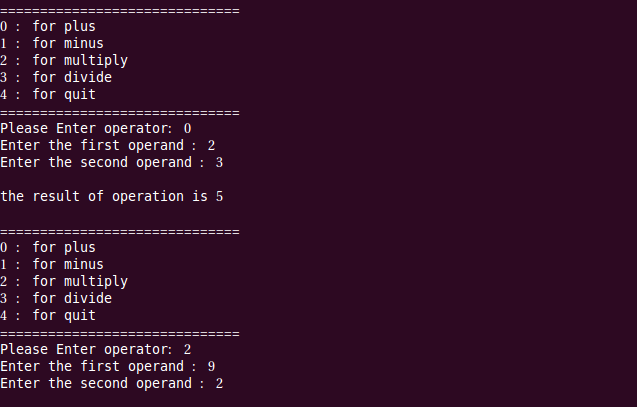
강좌 & 팁
글 수 2,412
2013.12.13 11:17:24 (*.52.177.249)
69204
함수포인터2
다음의 예제로 함수포인터에 대하여 더 알아 보겠습니다.
#include <stdio.h> |
실행결과입니다

get_operator 함수는 plus , minus ,multiply의 주소를 받게됩니다.
0~4 사이의 값을 받게되면 각각의 함수 주소들이 반환되고 이를 handle 에 담게되는데 handle
역시 함수 포인터 입니다.


